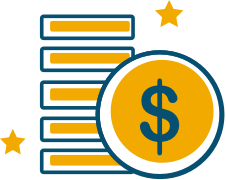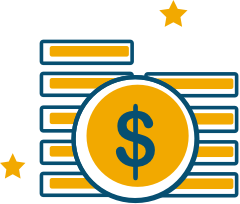Schedule a Webex meeting with Cisco’s dedicated retirement planning consultant
Here’s the deal.
Whether you’re five, 10, or 15 years from retirement, it’s never too late to take stock of your nest egg and make changes that can take you to the finish line.
Play “catch-up” now—look toward the pay-off later.
Beginning in the year you turn age 50, you can make “catch-up” contributions to save $7,500 more than the annual IRS limit. That means you can save up to $30,000 in the 401(k) in 2023, in any combination of Roth 401(k) and pretax contributions (provided you have not made contributions elsewhere in another employer’s plan this year).

Saving $7,500 more could make a big difference.
Let’s compare. Imagine you have a $500,000 401(k) account balance at age 50.
If you contribute up to the IRS pretax and/or Roth 401(k) limit of $22,500 (for 2023) every year, by age 65 you could have
$1,737,471.

But if you take advantage of the catch-up feature by contributing an additional $7,500 every year, at age 65 you could have
$1,917,202.

That could be an additional
$179,731.
You could use that money to help cover unexpected medical costs in retirement, or continue to invest it to potentially earn even more.
Here’s even more great news.
Your $7,500 in catch-up contributions can be made either pretax or as Roth 401(k) contributions.
This hypothetical example assumes monthly contributions of annual contributions of $22,500 and $30,000, respectively, from age 50 to 65. The illustration assumes tax-deferred compounding at a hypothetical 6% annual rate of return compounded annually with no loans or withdrawals. The ending values do not reflect taxes, fees or inflation. If they did, amounts would be lower. Earnings and pretax contributions from qualified retirement plans are subject to taxes when withdrawn. Qualified retirement plan distributions before age 59½ may also be subject to a 10% penalty. Systematic investing does not ensure a profit and does not protect against loss in a declining market. This example is for illustrative purposes only and does not represent the performance of any security. Consider your current and anticipated investment horizon when making an investment decision, as the illustration may not reflect this. The assumed rate of return used in this example is not guaranteed. Investments that have potential for 6% annual rate of return also comes with risk of loss.


